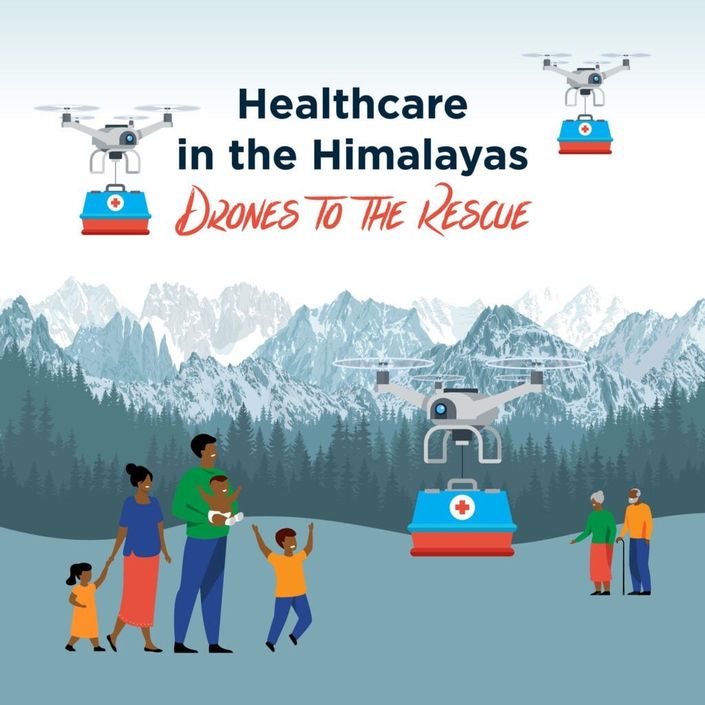
Healthcare in the Himalayas Challenge
This Course is included in DroneBlocks Membership
Essential care in the Himalayas
How does a community access healthcare in a remote area? Especially when you live in the Himalayas and you have 8 of the top 10 tallest mountains, including Mt Everest!
Access to healthcare is a challenge in many remote regions of the Himalayas, as patients and healthcare workers have to walk for hours or even full days along steep, winding tracks between villages and the nearest hospital. WeRobotics and Nepal Flying Lab want to challenge students to design a drone delivery system that is sustainable and time efficient so that remote communities can gain access to healthcare.
WeRobotics and the Flying Labs
More than 80% of people in Nepal live in rural areas, and 50% of them do so in isolated mountainous locations with little access to medical care. The majority of the nation’s healthcare institutions are not reachable via roadways.
In rural Nepal, the journey between a hospital and a healthcare centre typically takes six to eight hours. Since patient samples may only be analysed at diagnostic labs in major cities, this results in shortages of vital medications and explains why it can take so long to test patients for diseases like tuberculosis (TB).
About 70% of Nepalis are TB carriers, and many of them have the full-blown illness. In Nepal, TB is the fourth-leading cause of mortality and the primary infectious disease killer.
She Maps worked closely with the Nepal-based chapter of the WeRobotics Flying Labs, and its coordinator, Uttam Pudasaini to identify a real world challenge that was curriculum linked and could be simulated with microdrones. Check out Uttam’s awesome EduDrone presentation, where he shared some of the different projects that the Nepal Flying Labs work on, such as disaster mapping, tracking receding glaciers, and developing a drone delivery network to fight Tuberculosis in remote regions of Nepal.
Your Instructor

